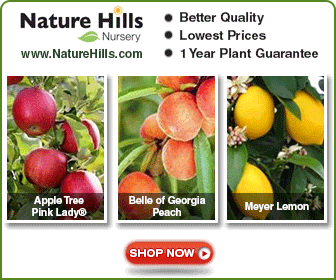With proper pasture management, both plants and animals will thrive. Here’s how to provide the best pasture for homestead livestock.
Annual grasses, perennial grasses, forbs, legumes, browse… when it comes to providing the best pasture for homestead livestock, it helps to know about the different growth habits and benefits of each type of pasture plant. If you’re new to homesteading, you might be thinking your animals will do fine on whatever kind of pasture already exists on your farm.
And, while they probably will do ok on your existing pasture, with a little bit of knowledge and planning, you can create a pasture where both plants and animals thrive. Producing high-quality grazing areas for your grass-fed livestock means lower feed bills and better-tasting meat for your freezer, and what farmer wouldn’t want that?
And, with proper pasture management, you can also improve the health of your soil. It’s a win-win all around. Here’s a look at the different types of pasture plants and how they grow to help you provide the best pasture for your homestead livestock.
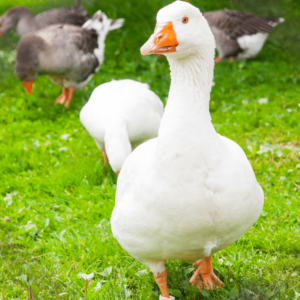
Annual and Perennial Grasses: Providing the Best Pasture for Homestead Livestock
There are two main types of grass to consider when it comes to pasture management: annual and perennial. Perennial grasses die back in the winter and come back in the spring for several years. Annual grasses only live for one season.
There are cool-season perennial grasses that will do best where conditions are moist and cool, thriving during the cooler seasons of spring and fall. You will get the most forage from cool-season perennial grasses in the early spring, right at the beginning of your grazing season. They may even go dormant during the hottest months of summer. Cool-season perennial grasses include perennial ryegrass, Kentucky bluegrass, and orchard grass.
On the other hand, warm-season perennial grasses thrive during the hot, dry months of summer. They will yield large amounts of forage for your grass-fed animals all summer long, and they can be harvested for hay to feed your animals over the winter. Warm-season perennial grasses include big bluestem, Indian grass, timothy, orchard grass, and switchgrass.
Annual grasses are mainly grain crops. This includes corn, sorghums, wheat, oats, barley, and rye. Annual ryegrass and annual bluegrass also fall into this category. Millet and Sudan grass are technically perennial, however, they will only come back year after year in southern climates, so it’s best to consider them as annual crops in most places.
The best type of grass for your pasture really depends on your climate. If it’s too hot or too dry, or too cool and too wet, certain grasses won’t’ thrive. You may even want to have more than one grazing area for your grass-fed animals… one with cool-season grasses and another with warm-season grasses… to boost productivity for a longer amount of time. Do your research and talk to local farmers to see which types of grass do the best in your climate.
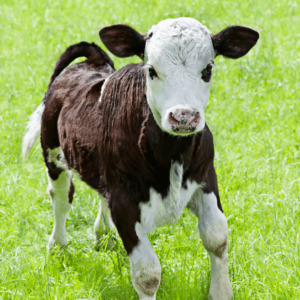
Grazing Management for Grass Pastures
It may take a year or more for perennial grasses to become well established, and they shouldn’t be grazed too soon. Allow them to get about a foot to 18” tall before grazing them. To avoid killing off perennial grasses over the winter, be sure to leave about 6” of growth in the fall. On the other hand, cool-season grasses establish quickly and can be grazed sooner and closer to the ground.
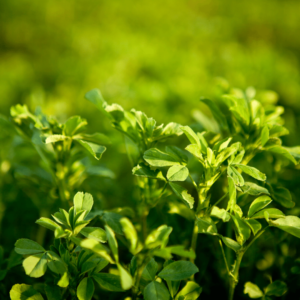
Legumes in the Pasture
Legumes are super important for pastures because they provide protein for livestock, they improve soil fertility. They’re also easily digestible by most species. Legumes also fix nitrogen from the air into the soil, which benefits neighboring plants. That means, adding legumes to your pasture mix could eliminate your need to fertilize completely.
Alfalfa is a perennial legume that does great in hot dry weather, but it shouldn’t be grazed too low. White clover, on the other hand, is a perennial legume that has a low-growing, spreading habit. It can easily get shaded out by taller plants, and it doesn’t thrive in hot weather as alfalfa does.
Annual legumes like beans and peas are usually grown as a grain crop, but they can be used for grazing as well. Incorporating them into an annual pasture will boost the protein value for your livestock. One way to manage annual pasture that includes both grasses and legumes is to graze it rotationally. That way you avoid the risk of killing the plants by trampling or overgrazing.
When planting legumes, you may want to inoculate the seed with rhizobacteria, depending on your location. Just like grasses, the types of legumes that are best for your pasture will depend on your climate. Once again, you will need to do some research to see which ones do best in your area. There is a higher risk of bloat when grazing animals on legumes, so do your research on that as well.
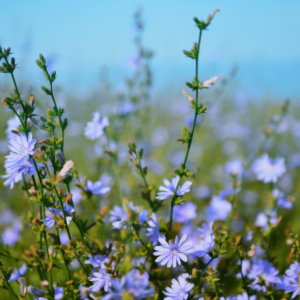
Forbs in the Pasture
You will probably have forbs in your pasture whether you plant them or not. Forbs are basically any flowering plant that’s not grass or a legume. Many are weeds, but some can actually be very productive in your pasture. Some of the more beneficial ones to include in your pasture are brassicas, plantain, dandelion, and chicory.
Adding forbs to your pasture mix provides essential minerals and other benefits for your grass-fed animals. Many of these plants also have specific nutritional or medicinal uses. For example, chicory is rich in tannins that can aid in the reduction of intestinal parasites. Forbs are very useful plants to incorporate in a diversified pasture mix, it’s worth doing some research to see which ones might be most beneficial for your situation.
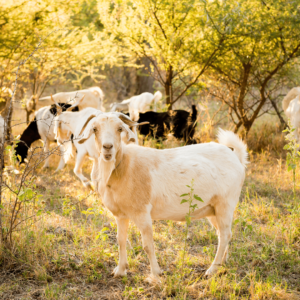
Browse in Your Pasture
Browse is a bit of a broad term that describes woody plants like shrubs and trees that aren’t generally incorporated into grazing areas intentionally. This includes things like deciduous trees, goldenrod, and brambles. Some types of woody plants can be toxic, so be sure you know what’s growing in your grazing areas.
Ruminants like goats and sheep love most types of browse, and they can help to maintain the growth of these aggressive plants, so they don’t take over your grazing areas. In fact, if you want woody plants gone from your grazing areas, goats and sheep will eventually kill them off if given enough time.
Where to Learn More About Pasture Management on the Homestead
As you can see, pasture management on the homestead is a broad topic with a lot of variables. Your climate, your soil, and the types of livestock you have all need to be considered. This post will give you the basics of pasture management on the homestead, but there’s so much more to learn. I could never cover it all here!
Every homesteader with grass-fed animals should own a copy of the book Managing Pasture: A Complete Guide to Building Healthy Pasture for Grass-Based Meat & Dairy Animals by Dale Strickler. This book goes into detail about the biology and benefits of grazing plants and different grazing strategies. It also has detailed plans for paddock and fencing set-ups, livestock watering, as well as effective methods for dealing with common pasture problems throughout the seasons, from mud to drought.
It was an invaluable resource on our homestead when we were first starting out, and I still refer to it often.
Final Thoughts: Providing the Best Pasture for Homestead Livestock
At the end of the day, the best strategy is probably going to be a diversified approach. Include the widest variety of plants possible in your mix to ensure that there’s something for your grass-fed animals to graze on from spring through fall. Plant what’s best for your climate and consider using rotational grazing methods to ensure that your plants thrive for the longest growing season possible.


